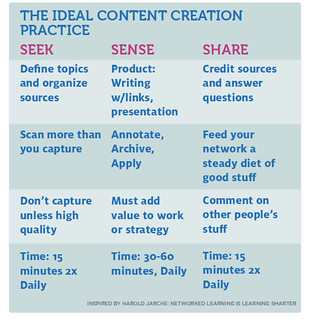In Part 1 and Part 2 of this series we took you through the basics of how to get started on social media and we offered advice on engaging with your audience.
But you should also be aware that, along with the many things you should do on social media, there are also many which you shouldn’t do. If you want these outlets to serve your business, you need to get it right.
Social Media Engagement Mistakes
It can’t be stressed enough that social media is essential for business. For example, according to a recent study, about 81% of Small and Medium-sized Businesses (SMBs) are using social media and 94% of these use the networks explicitly for marketing purposes.
So when building and engaging with your social media community, make sure to avoid committing any of these mistakes.
1. Posting Too Little, Too Much or Both
We already covered the healthy amount of daily posts for each network in Part 1. A common mistake that businesses make is to either not post at all or post very little over a long period of time. Other businesses tend to spam their followers in an overwhelming way. The third kind tend to neglect these outlets and then suddenly try to make up for all the time they haven’t been around by posting excessively in a momentary burst.
None of these methods is advisable. If you haven’t been around much, just start off slowly, post regularly (but don’t overdo it) and start engaging with your followers and community.
2. Being Too Self-Promotional and Asking Too Much of People
While social media is certainly conducive to fueling narcissism, this is reserved for private individuals. Brands that are too concerned with themselves, their products and successes usually lose their following.
Marketing on social media happens indirectly, by building a community, engaging actively through good content and offering quality support. Miss the mark and people will run from you.
The same goes for asking your followers to retweet and share every word you say. It can be perceived as intimidating and even needy. If what you offer is good, you can rest assured that people will embrace and share it.
3. Being Slow on Replies or Arguing with Your Community
We’ve covered this previously but it serves to be reiterated. To be slow on replies (3-4 days is considered slow on Twitter) makes your brand look disengaged and disinterested. Make sure to address replies, even if just briefly. If you are not able to respond straight away, give a sign that you have seen the message and will respond soon. Don’t forget to come back.
It is highly probable that you will be faced with criticism or comments that are meant to irritate. It can’t be helped. But never argue with people, whoever they are and whatever their goals may be. You are still free to block or ban those that are spammy or straightforwardly rude, but whatever the case, stick to your brand’s tone of voice and handle things in a professional way.
4. Using Hashtags Excessively
Hashtags (mainly on Twitter but increasingly also used on Facebook and Google+) are a great way to add an additional spin to your tweet and target it better. But remember to use them sparingly. 1-2 hashtags is best. Your tweets should never look like this:
20% off your #GarciniaCambogia order today! #weightloss #sale #dietarysupplement
‘Overdosing’ on hashtags is perceived as spammy and tells people that you probably don’t understand what to use them for.
5. Automating Responses and Thank You Messages
Automating curated content is one thing, but automating your responses is another. The former will save you time, the latter will lose you followers. Responses should be personal and must show that there’s a human sitting behind the response and not a program.
Automated thank you messages for ‘following’ also miss the mark. They are quite obviously automated (usually received in a matter of minutes) and don’t show sincere and real engagement on the part of the brand. Avoid these whenever possible.
Content Curation Mistakes
There’s plenty that can go wrong with content curation as well. Here are some dangerous practices to take out of your routine to save yourself from embarrassment.
6. Posting Without Reading
Due to too much work, you might be tempted to just ‘throw in a couple of links’ in your Buffer, taken straight from your Feedly. Make sure to at least skim through the article before you post it, in order to avoid blunders.
Titles are meant to be punchy and attractive but that could be misleading; flat content that has no value hides under many guises. Never share a link just because the headline sounds good; first make sure that the content matches.
7. Using Only a Few or the Most Popular Sources
 Your content curation needs to be diverse. Posting 3 articles in a row from the same source is not engaging. If the website is good, users will just add it to their own feeds and won’t bother visiting your profile.
Your content curation needs to be diverse. Posting 3 articles in a row from the same source is not engaging. If the website is good, users will just add it to their own feeds and won’t bother visiting your profile.
Another mistake is to post materials from only the most popular and well-known sources. There is plenty out there that might not make the headlines but is well worth a read. Make sure to find these gems and offer them to your followers.
8. Not Customizing Your Posts
Okay, so you found an article with a punchy title and high-quality content. Think twice before you rush to share it with its original title.
In social media, your posts are part of a continuous stream of information that is being shared. If you, along with other brands in the industry, all share the same article, keeping its original title, users will turn their attention elsewhere.
Again, engagement is what makes the difference. If you post content that features your own editorial input – be it a different title you give to the piece, a comment or your opinion – this will attract more people because it will stand out.
9. Sharing the Same Content Across All Networks
If you share exactly the same content across all your social media profiles in exactly the same way, people will find it pointless to follow you in both places. There must be some added value to following you on more networks, so make sure to introduce some (but not full) variety in the things you post.
Conclusion
Avoid these mistakes, stick to your brand’s tone of voice, post good content regularly and engage personally, directly and timely. These are the keys to making your private label supplement brand stand out from all the rest. Users will be happy to exchange comments and will look for your content with anticipation, rather than just notice it.
Private Label Supplement aims to provide excellent advice and service to supplement retailers. We would like to share our expertise in the field with you and help you grow your supplement brand. Get in touch with our sales team at 855-209-0225 ext. 2 or email us at sales@privatelabelsupplement.com to start today.
All my best,
Stefani Thionnet
Stay focused and never give up!












